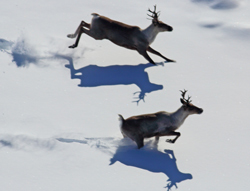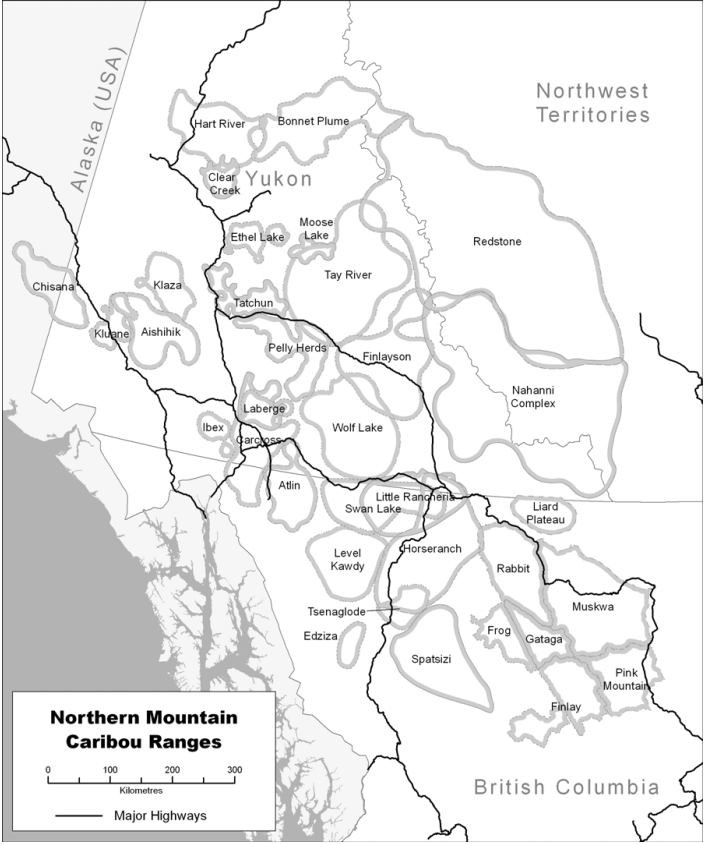
Caribou
Nahanni National Park Reserve
Quick facts

Height: 1.0 to 1.2 m at the shoulder
Weight: 100 to 210 kg
Eats: Lichen, grasses, shrub leaves, herbs, mushrooms
Calving season: June
Offspring: One calf per year
Rutting season: September-October
Lifespan: 8-15 years
SARA Status (2003): Special Concern
COSEWIC Status (2014): Special Concern
Caribou roam Nahanni National Park Reserve’s peaks, plateaux and valleys, and have for centuries. They rely on the wide-ranging and undisturbed habitat found in mountains and forests. Caribou eat the lichens that live on trees or grow on the ground and are commonly found throughout the coniferous forests that speckle the Mackenzie Mountain range. They spend their winters in lower elevations (valleys) where there’s less snow cover and lichens are more accessible.
These creatures are an indicator species, which means they reveal a lot about the health of the alpine and forest ecosystems where they live. They are also an umbrella species, which means that by protecting caribou, we also protect many other species that have the same habitat needs as caribou.
Caribou that live in Nahanni National Park Reserve are part of the Northern Mountain population of Woodland Caribou. Woodland Caribou are a subset of caribou that ranges from west-central BC to the Yukon and western Northwest Territories.
Nahanni National Park Reserve is home to at least one herd (Redstone) and one herd complex (Nahanni Complex). The Nahanni Complex may comprise up to three herds (South Nahanni, Coal River, and La Biche).

Map from: HEGEL, T., K. RUSSELL, W. J. RETTIE, AND D. P. TATE. 2016.
South Nahanni and Coal River Northern Mountain Caribou herds:
Population status and demographic characteristics.
Yukon Fish and Wildlife Branch Report TR-14-06. Whitehorse, Yukon, Canada.
Learn more about the process of determining herds, ranges and how they are (or aren’t!) interconnected: Herd Connectivity

Map of disbursement of northern mountain populations: (Map from: Environment Canada. 2012 Management Plan for the Northern Mountain Population of Woodland Caribou (Rangifer tarandus caribou) in Canada. Species at Risk Act Management Plan Series. Environment Canada, Ottawa. vii + 79 pp.) They move between alpine areas in summer and subalpine forests in winter. Living in old-growth forests and high alpine areas that are hard to access helps them avoid predators and bugs, as well as access their favourite lichens. Caribou can be found throughout valleys in the northern and western parts of Nahanni National Park Reserve mostly during the winter months. Visitors are unlikely to see them, but if you do happen to see one, please don’t disturb them and share your encounter with Parks Canada staff so they can learn more about the herds in the park.Where do they live?

Related links
- Date modified :